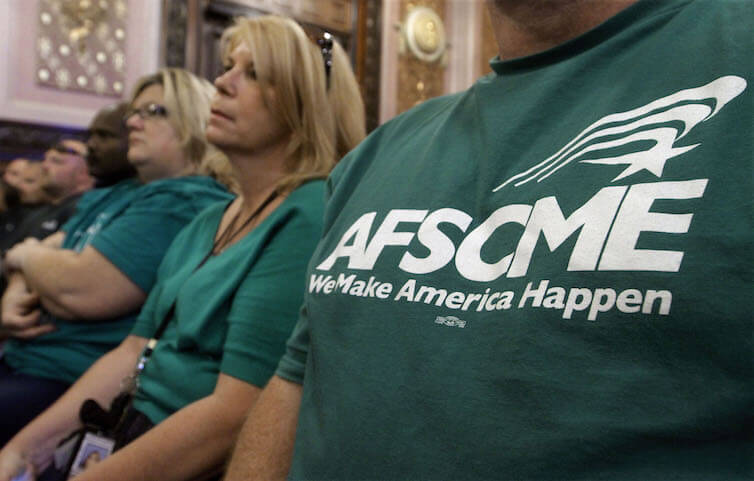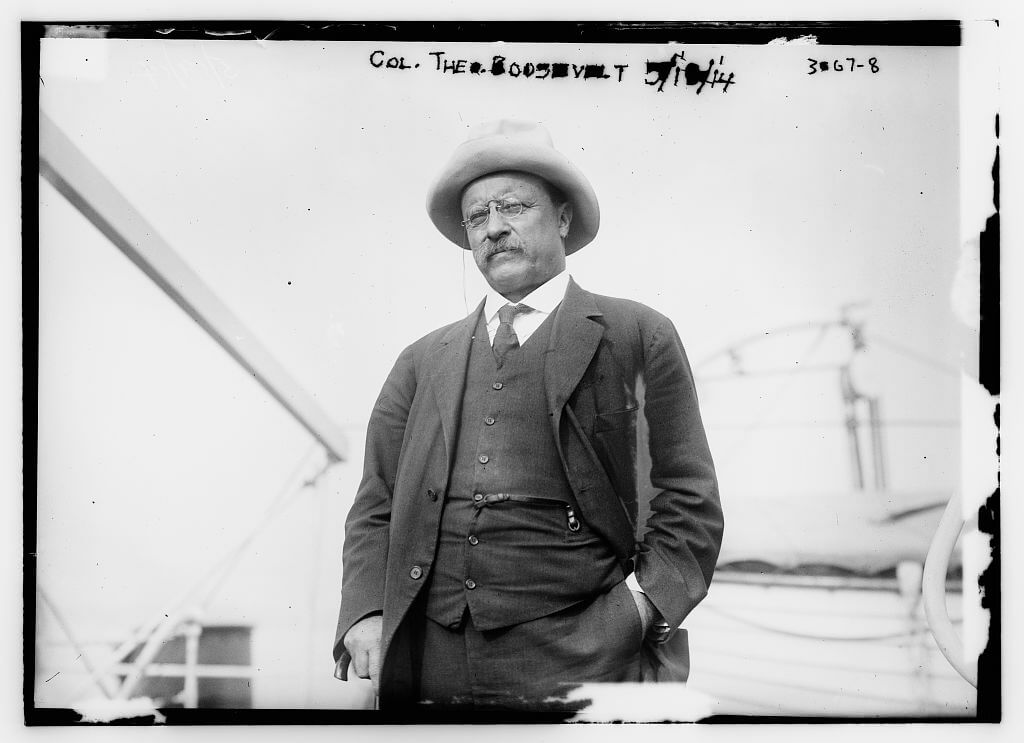Understanding the importance of monopsony power in the U.S. labor market

With the launch of our new website, we are reintroducing visitors to our policy issue areas. Informed by the academic research we fund, these issue areas are critical to our mission of advancing evidence-based ideas that promote strong, stable, and broad-based economic growth. Through June and continuing in July, expert staff have been publishing posts on our Value Added blog about each of these issue areas, describing the work we do and the issues we seek to address. The following post is about Wages. For previous posts on other issue areas, please go to our Value Added home.
The recent U.S. Supreme Court decision in Janus v. American Federation of State, County, and Municipal Employees is predicted to decrease the size and budgets of public-sector unions, potentially limiting their effectiveness in collective bargaining for their members. The court ruling, following the decades-long decline in private-sector union membership, presents economists and policymakers alike with the strong possibility that more and more employers will be able to exercise so-called monopsony power over the wages of their workers. Not only is there research documenting the spillover effects of higher wages for union members leading to higher wages for nearby workers, but economic models show how unions can be useful in balancing this monopsony power—the power of firms to set low wage levels—as well.
Why is understanding monopsony power so important today? Evidence that helps policymakers understand the structure and the dynamics of the U.S. labor market will illuminate the importance of policies and institutions such as unions that ensure workers receive fair wages and that economic growth is broadly shared. This is the main thrust of Equitable Growth’s work on the U.S. labor market—endeavoring to improve our understanding of the forces and barriers that shape the lives of workers. A clearer picture of the labor market helps policymakers understand why workers earn what they do, what opportunities they have, and what policies can help all workers share in strong, stable, and broad-based growth.
Our work in the labor market at Equitable Growth begins with deconstructing the prevailing model of how the labor market works—the one taught in Econ 101 classes that paints a picture of the economy where all workers can find productive opportunities and competition will reduce barriers such as discrimination to earning fair wages equal to the value they produce. Data-driven evidence increasingly finds that the market does not work the way economists were taught in introductory economics courses. Understanding these emerging new realities will help economists and policymakers alike consider solutions for a more equitable economy.
Monopsony is one increasingly recognized area of research in labor economics that illuminates imperfections in the U.S. labor market that have led to wage stagnation and reduced job opportunities. The concept was developed by the economist Joan Robinson in her 1933 book The Economics of Imperfect Competition to describe the labor market equivalent of a monopoly, where workers only have the option to work at one employer, so their wages will be set less than the value they create since they have no outside options. Think of a mining town—geographically remote so that workers cannot find mining employment elsewhere—where laborers are stuck with lousy wages and probably high prices at the company store, too. In her then-theoretical model, Robinson suggested that gains from economic growth are not balanced between workers and employers. In her original application of monopsony, Robinson also demonstrates how a trade union can increase wages to a level comparable to a competitive outcome, with profits more equitably split between workers and employers, through policies such as minimum wages and collective bargaining.
Once considered a rare anomaly, recent research sheds light on the likelihood that employers today have wage-setting power to undercut their workers’ wages and earn outsized profits. The availability of new sources of data and economists’ ability to discern previously undetected patterns through sheer computational power allow researchers to test the premise that employers have geographic concentration over jobs that lead to lower pay. Using new data from CareerBuilder.com, economists Jose Azar at the IESE Business School at the Universidad de Navarra, Ioana Marinescu at the University of Pennsylvania, and Marshall Steinbaum at the Roosevelt Institute find in a recent study that going from a less concentrated labor market to a more concentrated one was associated with a 17 percent decline in the wages employers were posting to the website. While mining towns may be more rare, increasing concentration in a number of sectors of the U.S. economy can still lend market power to individual employers, which leads to low wages.
But work pioneered by economist Alan Manning at the London School of Economics in his book Monopsony in Motion broadens the definition of monopsony to include labor market dynamics where workers do not respond to changes in wages as would be predicted by a competitive model, which means employers are able to set wages lower than a competitive level. In a competitive model, all workers would leave their jobs if they got a pay cut or if higher wages were available elsewhere. But in a dynamic monopsony model, so-called search frictions—including imperfect information and other constraints to job mobility such as caregiving responsibilities outside of work—would give employers more power to set wages below competitive levels, while still maintaining a sufficient supply of workers. This dynamic fosters inequitable outcomes for workers.
Temple University economist Doug Webber tests the hypothesis of widespread dynamic monopsony and whether search frictions appear to maintain low wages across the U.S. labor market in his 2015 paper, “Firm market power and the earnings distribution.” Webber finds pervasive monopsony across the labor market, with the key finding that less monopsony power would lead to less income inequality.
As Webber notes in his research, measuring the extent of monopsony can be difficult because of data constraints, which is why much of the exciting new research uses nontraditional sources such as data from career websites. His own research relies on restricted access to linked employer-employee data from the U.S. Census Bureau’s Longitudinal Employer Household Dynamics survey, but he also relies on the job-search model developed by economist Kenneth Burdett of the University of Pennsylvania and the late Nobel Laureate and Northwest University economist Dale Mortensen. Webber is able to examine worker flows to employers in response to pay levels at firms to measure labor supply elasticity to the firm.
Labor supply elasticity is the measure of how the supply of labor responds to wage levels. Remember that a competitive model would predict that all workers would leave their jobs if wages are cut, and all workers would flow toward firms with high wages. These flows of workers when there is competition supposedly keep wages in rough equilibrium across the labor market because workers are paid equal to the value they contribute to their firms. Elasticity would be very high in a competitive market, with the supply of labor being very responsive to wage levels. If elasticity is low, then workers are not responsive to pay levels, which means employers will have the ability to set wages lower than what would exist in a competitive market.
Webber’s econometric analysis finds an economywide elasticity of 1.08, which is much lower than what economists would expect in a competitive labor market. Yet there is still a lot of variation among firms. He finds that 3 percent of his sample of firms have elasticities of more than 5. Examining monopsony by industry, he finds that wages in manufacturing appear to be more competitive, while health care and administrative support are the least competitive, giving employers the most wage-setting power in these industries. His analysis also finds that low-wage firms and low-wage workers have higher labor supply elasticity.
Finally, dynamic monopsony across the economy may be one of the reasons we experience high income inequality in the United States, and why most workers have not been able to share in the economic growth of the wealthiest nation. Webber calculates a “counterfactual earnings distribution,” hypothesizing what things would look like without the patterns of monopsony that he finds. He presumes a one-unit increase in firms’ labor supply elasticity and finds that it would be associated with a 9 percent reduction in the variance of the earnings distribution. In other words, reducing the impact of monopsony across the economy would make it more equitable for workers.
Webber notes that employers boast less monopsony power in the heavily unionized manufacturing industry, something the late Joan Robinson back in the 1930s said was due to the role of unions in balancing monopsony power in her original conception of the theory of monopsony. New research proves her point that collective bargaining by unions lifts wages closer to what they would be predicted to be in a competitive market. The result would be that the earnings distribution would not be as wide and unequal as it currently is in the U.S. labor market.
Unfortunately, in light of the Janus v. AFSCME ruling, unions’ power to balance monopsony may well wane even more, exacerbating already tangible U.S. income inequality. Equitable Growth’s work on the U.S. labor market—through our academic grant-giving and in-house research and analysis—continues to find that the accepted economic narrative of an unchecked labor market leading to fair opportunities for workers is woefully mistaken, and seeks to understand the ways in which policies and institutions can lead to strong, stable, and broadly-shared growth.






